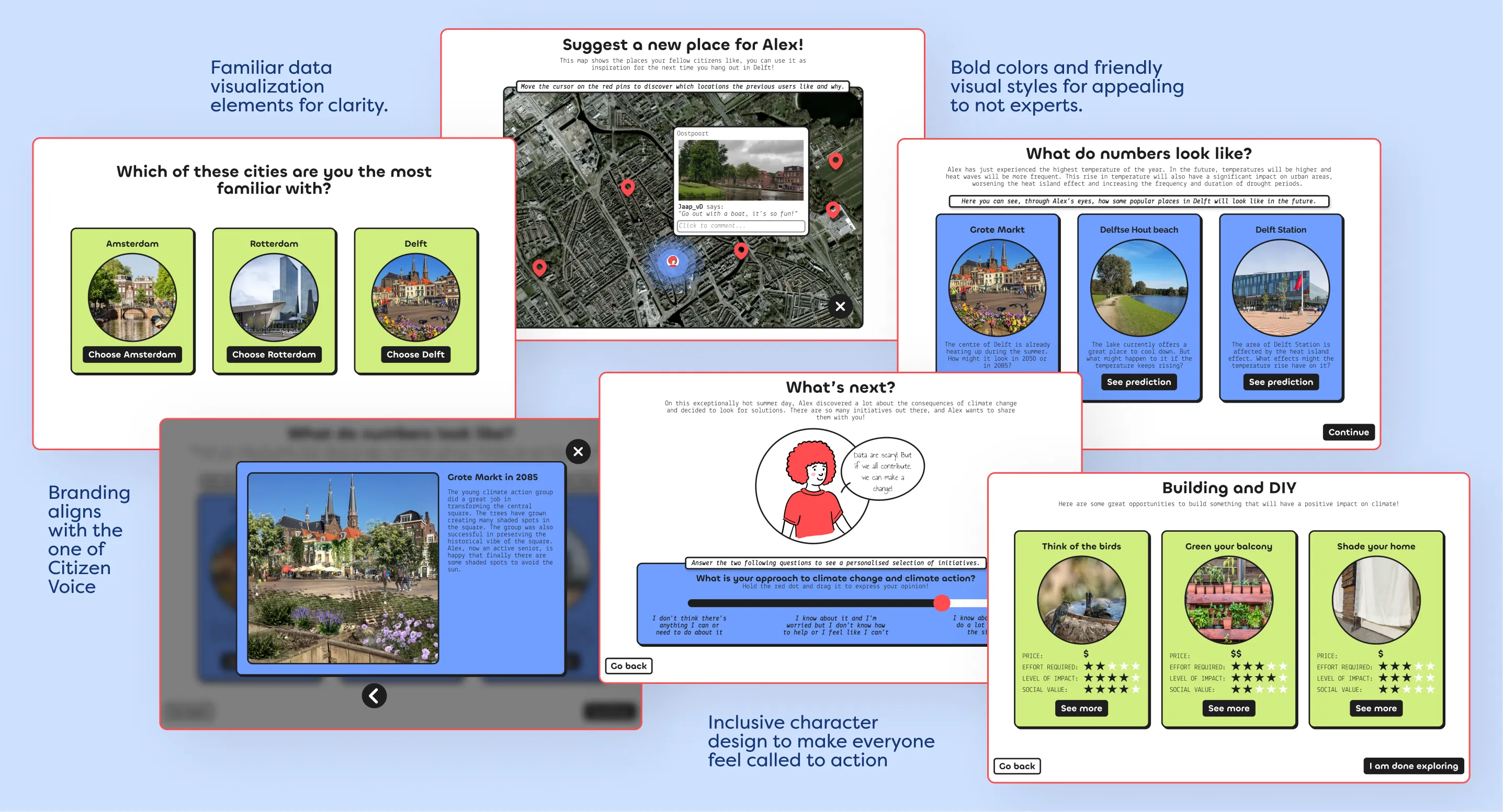Citizens meet Climate
Type: Academic research project
Role: UX/UI Designer
Year: 2023/24
Cities aim to become climate-proof through various urban interventions, many of which require citizen support and participation. However, citizens do not understand climate risks or do not know how to take proper action. Digital climate action platforms have the potential to reach larger numbers of citizens, but they are ineffective and underutilised. This project developed a tool to increase awareness about climate change, and motivate and empower citizens to take climate action. My role focused on shaping the user experience: from defining user needs through research, to designing and testing interaction flows and delivering a Figma prototype.
Lack of clarity: Digital climate action platforms provide technical, unclear, and overwhelming information that scares away users.
Lack of guidance: Digital climate action platforms do not guide users in taking action in the real world, so citizens do not translate knowledge into action.
Lack of engagement: Digital climate action platforms are not engaging, visually appealing, or intuitive, so citizens quickly drop out when using them.
Design a digital platform that motivates and empowers citizens to take climate action in real life.
I conducted a comparative analysis of 13 existing digital platforms for public participation and climate action. I then identified the most common design elements employed across these platforms and analyzed their intended purposes, such as fostering engagement, informing users, or guiding their actions.

Based on my research findings combined with the ones of other team members, we developed a 6-point rubric, a set of actionable design guidelines for creating effective digital climate action platforms.
Informing citizens and valuing their knowledge
Balancing negative and positive communication
Providing personally relevant perspectives
Providing individual and collective action tools
Providing clear, reliable, and open scientific data
Including appealing and engaging elements
Building on the research findings, we explored solutions through three prototyping and testing iterations, evolving from low-fidelity paper sketches to a refined high-fidelity prototype in Figma. The iterations allowed us to explore clear data visualization strategies, motivating tone of voice, intuitive and accessible user flow.

First user test with lo-fi paper prototypes

Screens from the first digital prototype





The interface was designed in alignment with Citizen Voice’s branding to ensure coherence and recognition, while the friendly and colorful style was chosen to make the platform approachable for non-expert users. Visuals make use of familiar data visualization strategies and inclusive representation.

The final testing phase showed promising results, validating the concept and its potential impact. With more time and resources, I see exciting opportunities to further refine the tool, particularly by polishing interactive elements, enhancing UI details, elevating the visual design, and optimizing mobile responsiveness.





During this one year long project, we had the chance to present the concept at the AMS institute Scientific Conference, at the Climate Action Festival organised by the Delft University of Technology and at the Out-Mathenesse Lentefeest in Rotterdam. Furthermore, Citizens meet Climate was selected by 4TU.Federation as part of the 2024 portfolio of design projects that explore how design can drive change.
Read the 4TU.Federation article